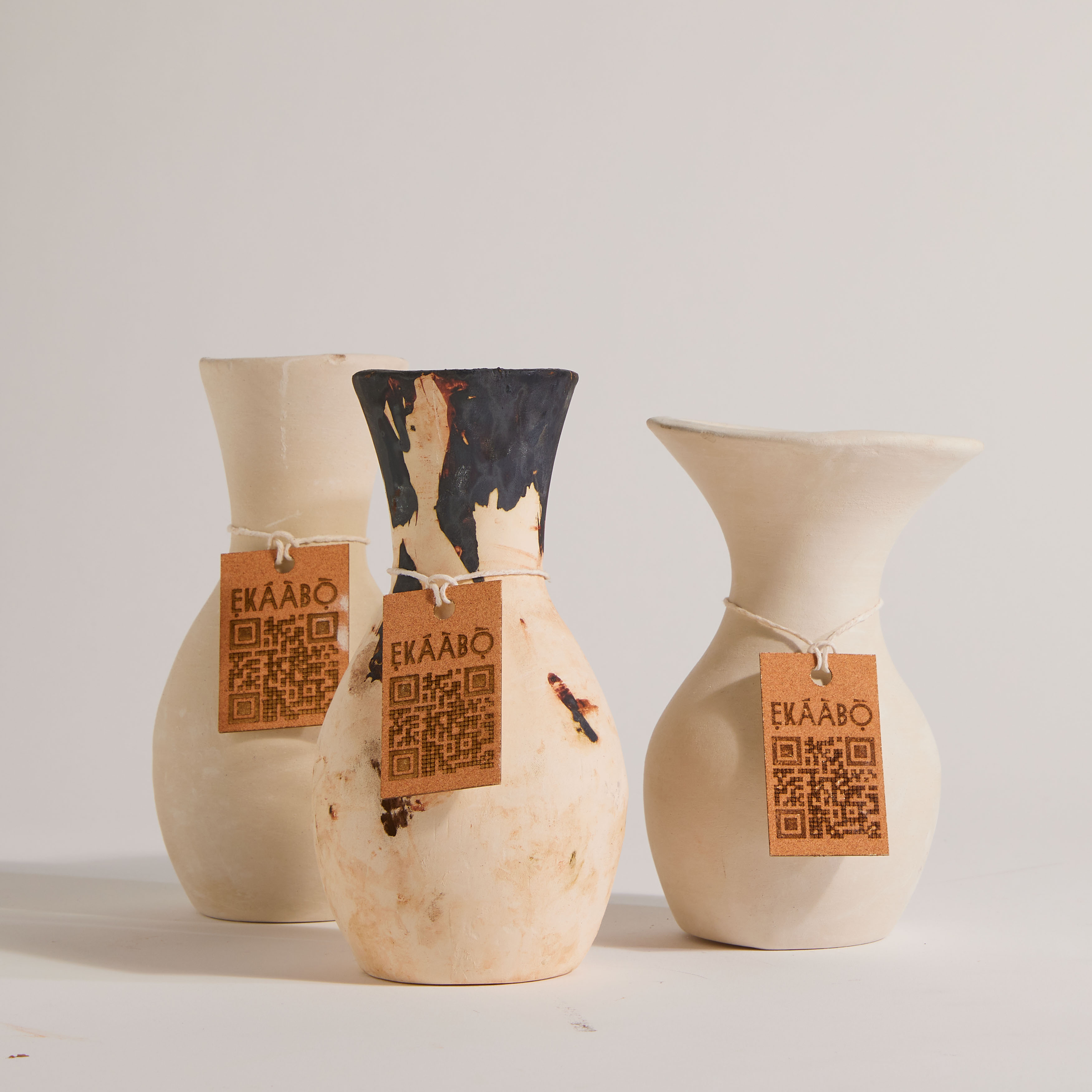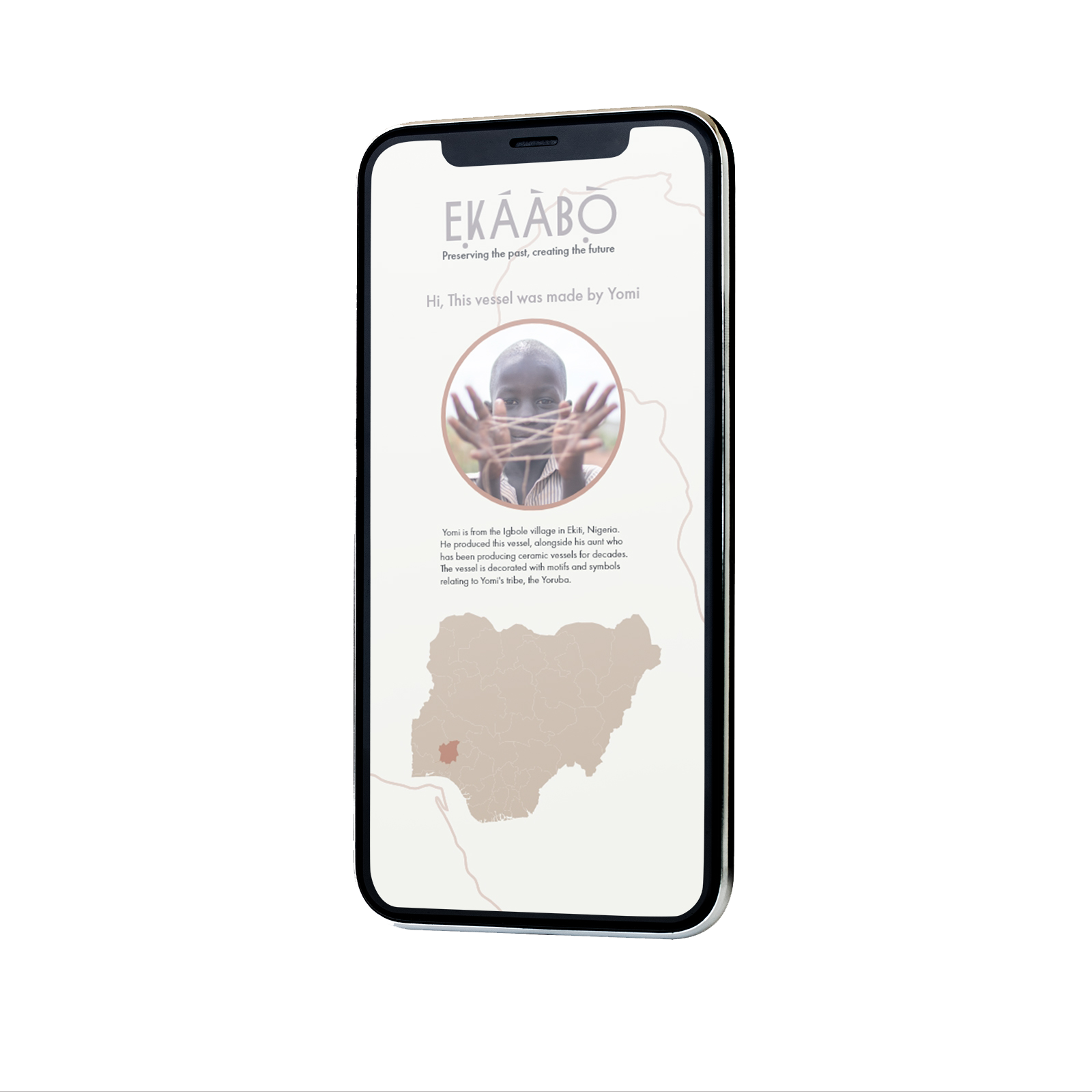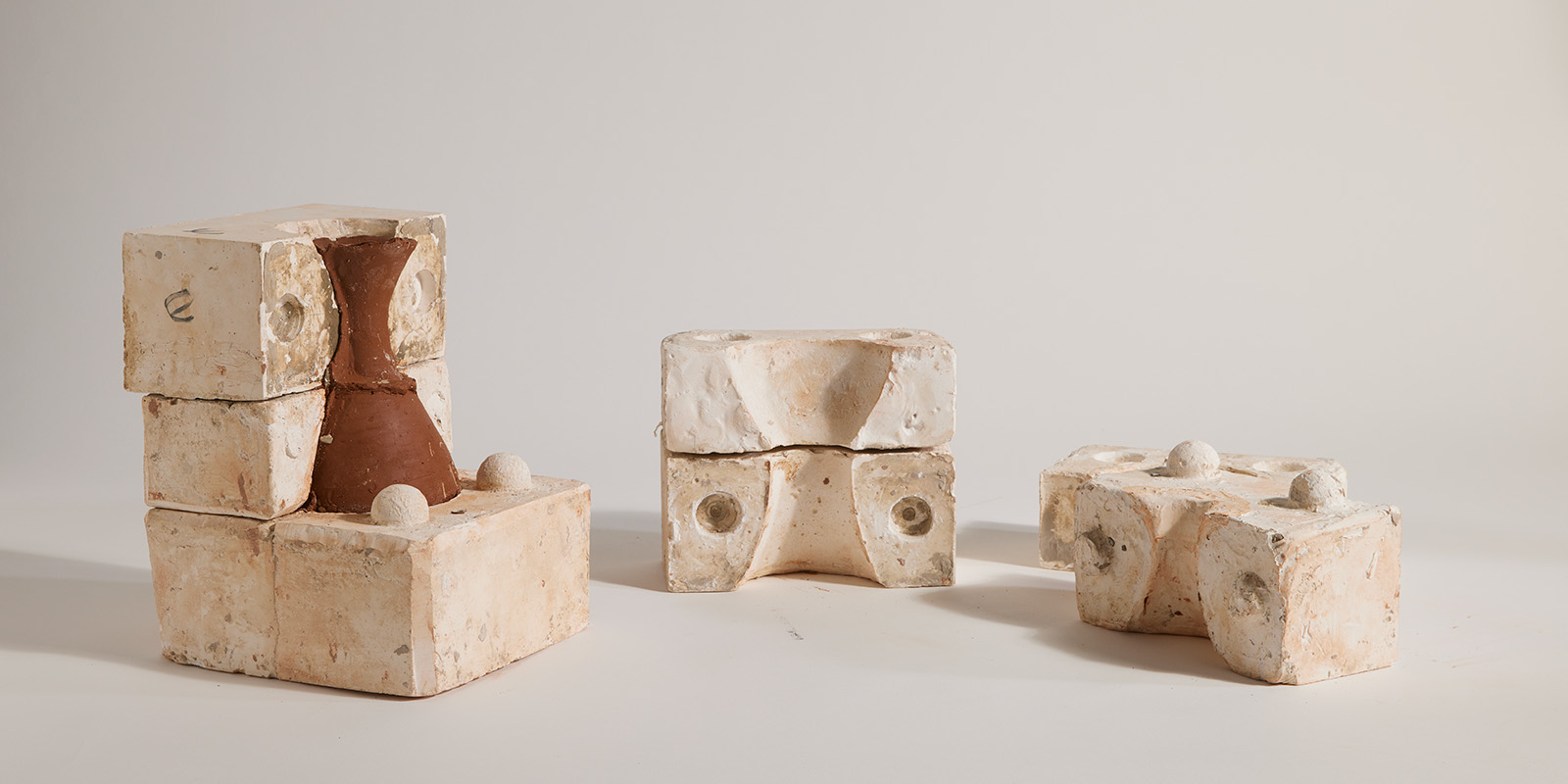Ẹkáàbọ̀
Ẹkáàbọ
Timeline: 8 Months, Oct 2022 - May 2023
Ẹkáàbọ̀ (E-Kha-Boh) Is a collection of modular ceramic molds aimed at introducing a younger generation to traditional African ceramic practices. Through engaging with the younger generation, the project seeks to encourage the continuance and evolution of these traditions while also empowering communities to adapt to changing social and economic conditions. The molds are accompanied by a digital platform that provides consumers with details about the artisans that made their products and also connects artisans to each other further facilitating their innovation, creativity, and autonomy.
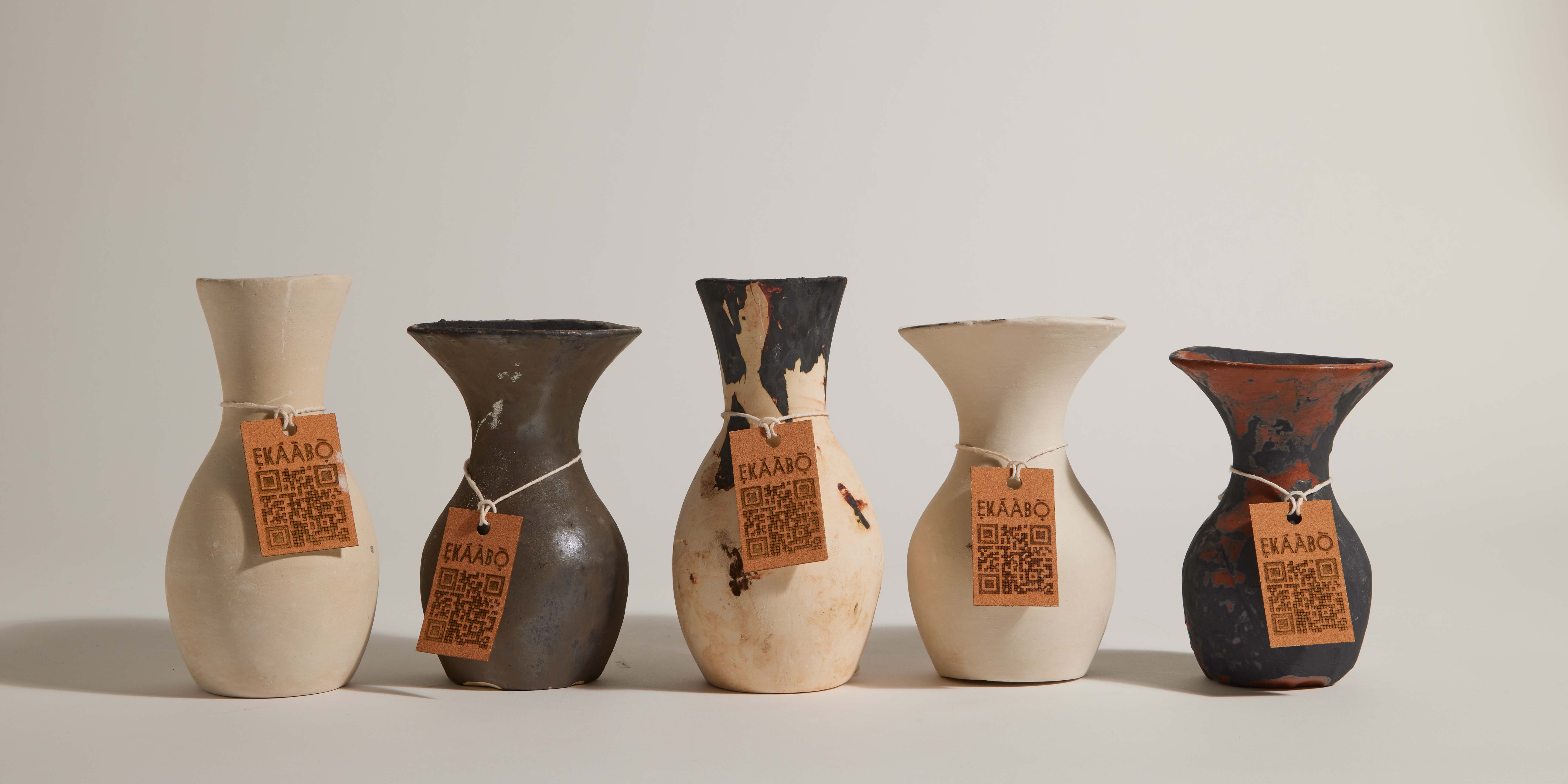
Problem Area
Traditional craft practices are declining worldwide due to modern technology and globalization. However, this decline is particularly problematic in West Africa, where it has been further accelerated by the influence of colonization. These practices are not only a way for communities to connect with their culture and history but can play an important role in the growth of local economies. The loss of traditional craft practices in West Africa not only threatens the preservation of cultural heritage but also the livelihoods of artisans and the overall economic development of the region.
Traditional craft practices are declining worldwide due to modern technology and globalization. However, this decline is particularly problematic in West Africa, where it has been further accelerated by the influence of colonization. These practices are not only a way for communities to connect with their culture and history but can play an important role in the growth of local economies. The loss of traditional craft practices in West Africa not only threatens the preservation of cultural heritage but also the livelihoods of artisans and the overall economic development of the region.
Research
The project utilised a range of primary and secondary research methods to gather data. The primary research involved an extensive review of academic journals, podcasts, books, and magazines related to the area of research, which provided a foundational understanding of the subject matter. This knowledge informed the secondary research, which consisted of interviews with professionals working in Sustainable development, African material culture, Handicrafts, and Education. Additionally, a photo-study was conducted at an African craft retailer, to gain a tactile understanding of the project’s potential outputs.
The project utilised a range of primary and secondary research methods to gather data. The primary research involved an extensive review of academic journals, podcasts, books, and magazines related to the area of research, which provided a foundational understanding of the subject matter. This knowledge informed the secondary research, which consisted of interviews with professionals working in Sustainable development, African material culture, Handicrafts, and Education. Additionally, a photo-study was conducted at an African craft retailer, to gain a tactile understanding of the project’s potential outputs.
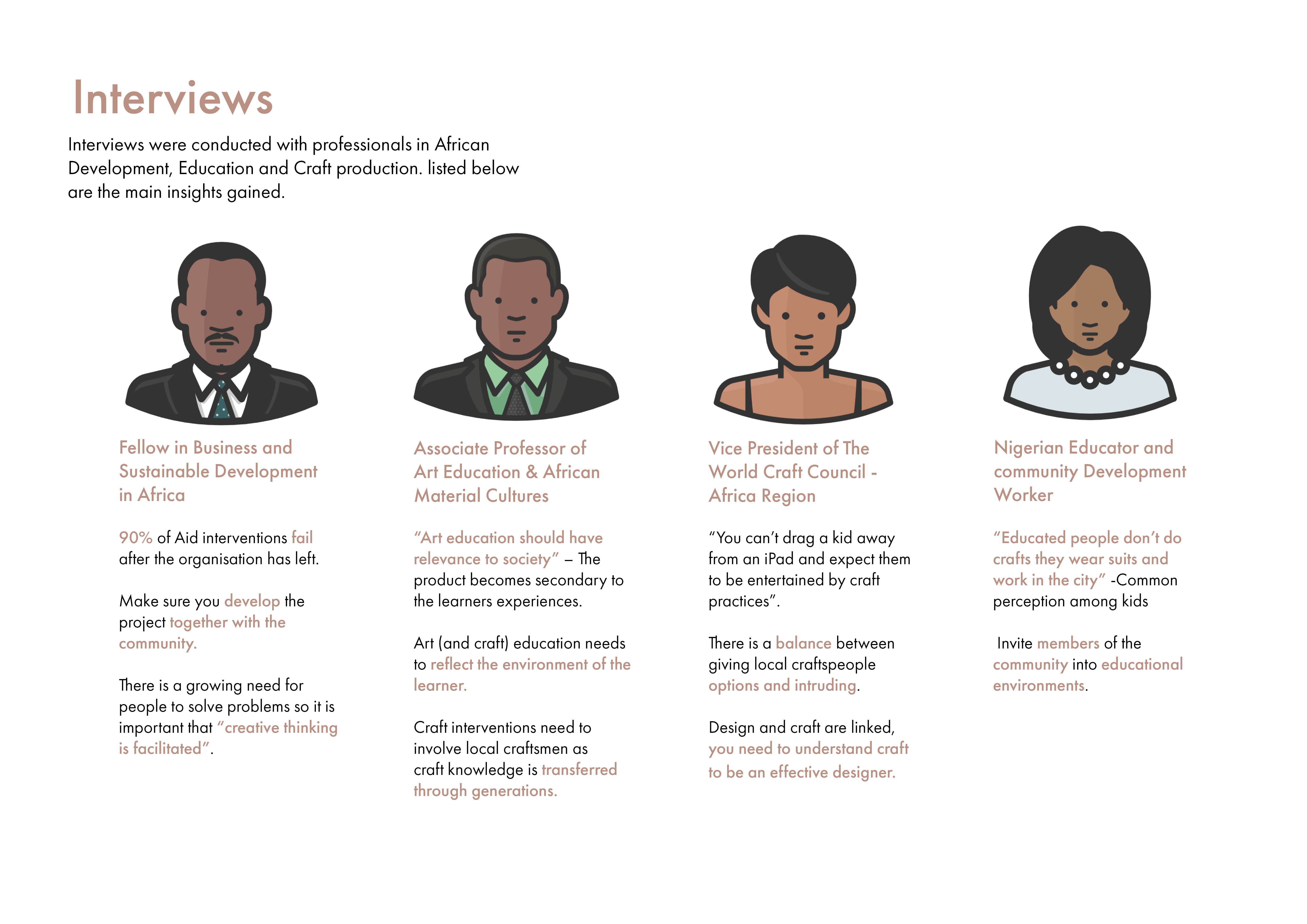
System Design
During the research stage it was identified that most young people didn’t want to learn craft skills, as they believed that it was a job for uneducated people. If crafts could be seen as a way of generating viable income this would inspire a younger generation of craftspeople. Emphasising the economic potential of craft can help promote a greater appreciation for traditional practices and enable young people to view craft as a valuable and respected profession. From this evaluation a brief was developed.
![]()
![]()
During the research stage it was identified that most young people didn’t want to learn craft skills, as they believed that it was a job for uneducated people. If crafts could be seen as a way of generating viable income this would inspire a younger generation of craftspeople. Emphasising the economic potential of craft can help promote a greater appreciation for traditional practices and enable young people to view craft as a valuable and respected profession. From this evaluation a brief was developed.
“Recontextualise traditional west African
craft practices to grow local economy and inspire a younger generation to take
up the craft”.

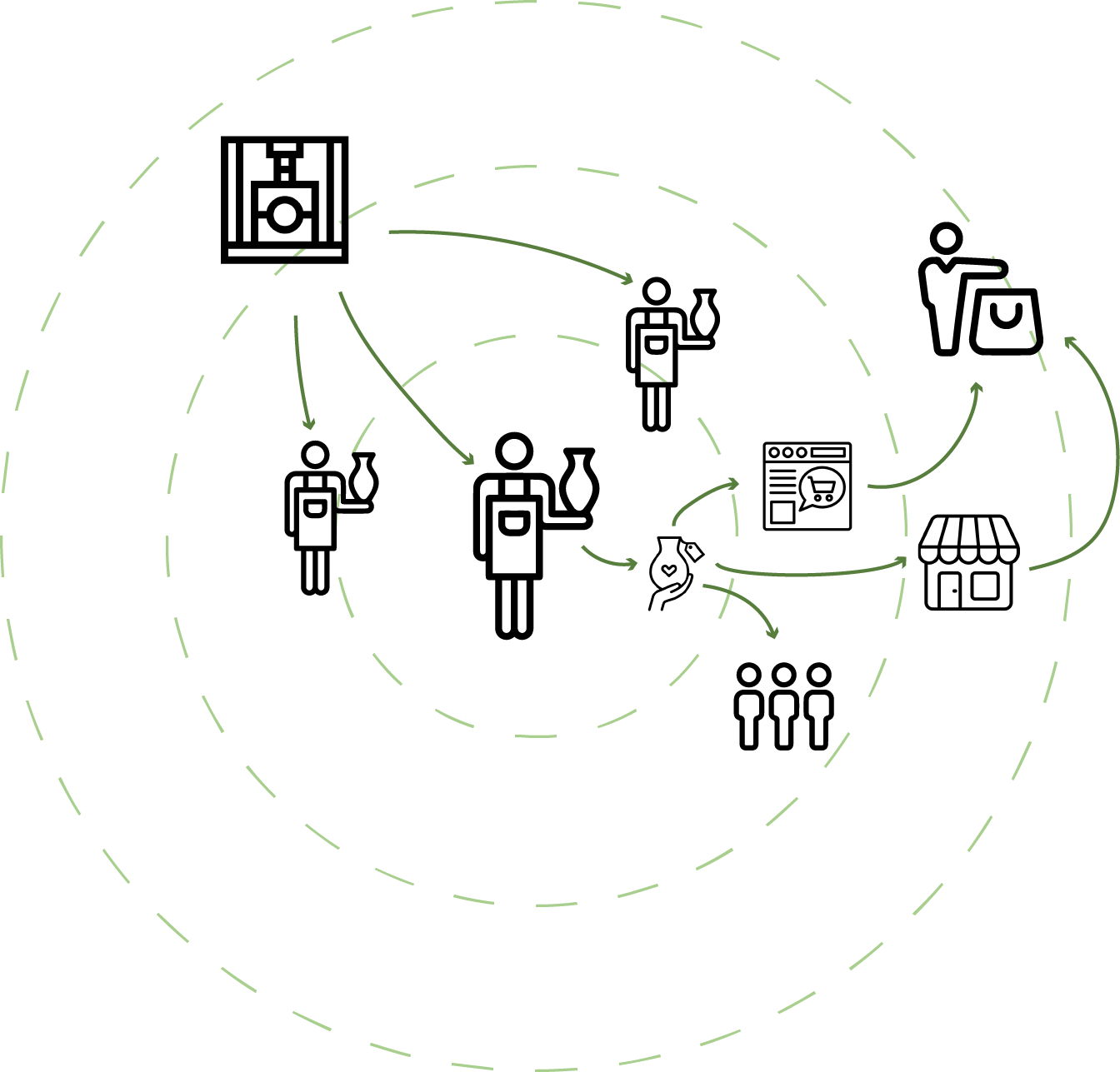
Craft Exploration
I believed that a better understanding of the processes, materials, and limitations of traditional craft practices, would allow then to innovate more effectively. The practices that were chosen were textile dying and ceramics. These two were chosen due to their prevalence in West African communities and also my access to equipment and raw materials. Ceramics production emerged as the best process to develop a range of standardised forms for. The cultural significance of West African ceramics lies mainly within the decoration of the vessels.
I believed that a better understanding of the processes, materials, and limitations of traditional craft practices, would allow then to innovate more effectively. The practices that were chosen were textile dying and ceramics. These two were chosen due to their prevalence in West African communities and also my access to equipment and raw materials. Ceramics production emerged as the best process to develop a range of standardised forms for. The cultural significance of West African ceramics lies mainly within the decoration of the vessels.
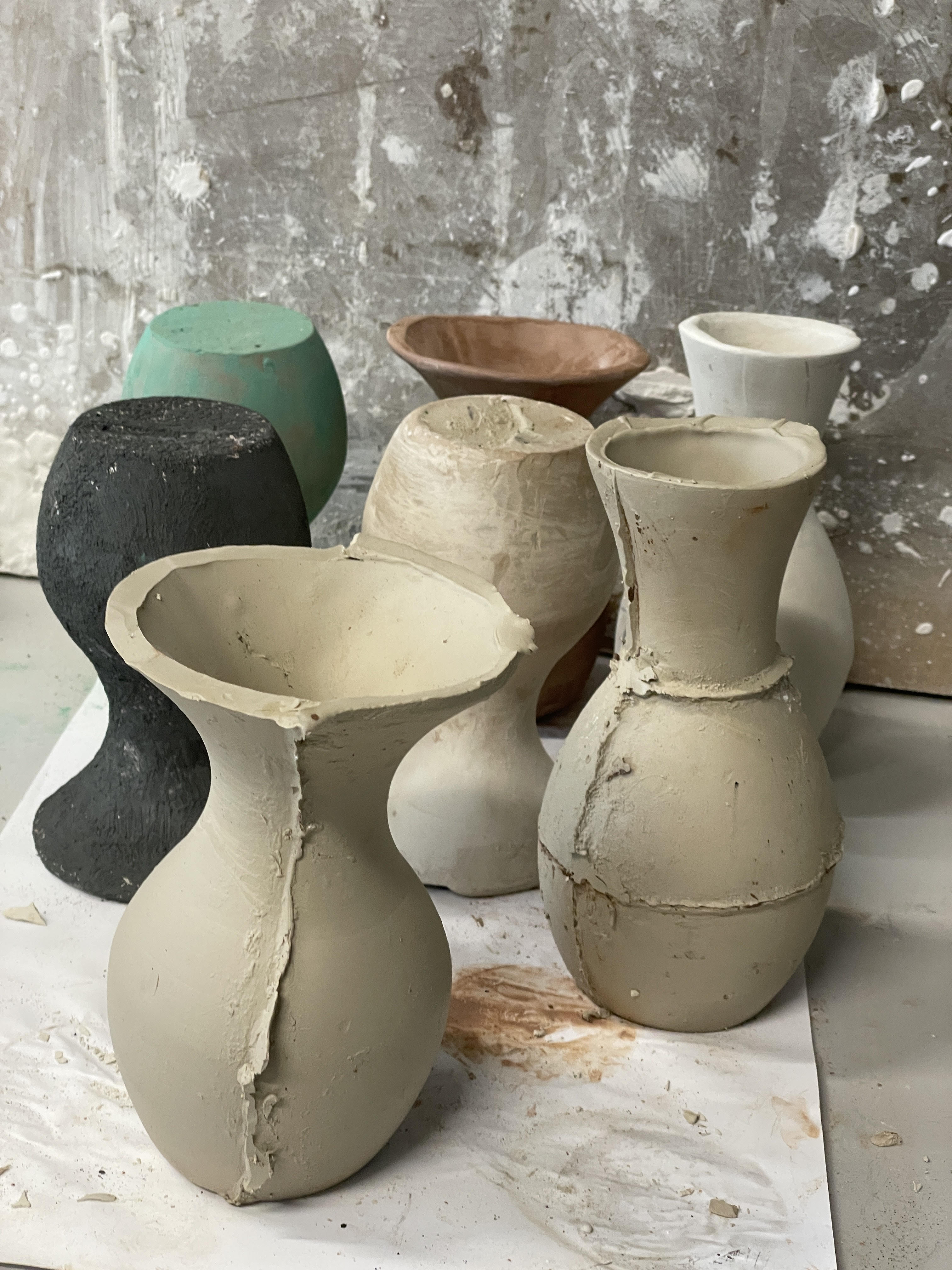
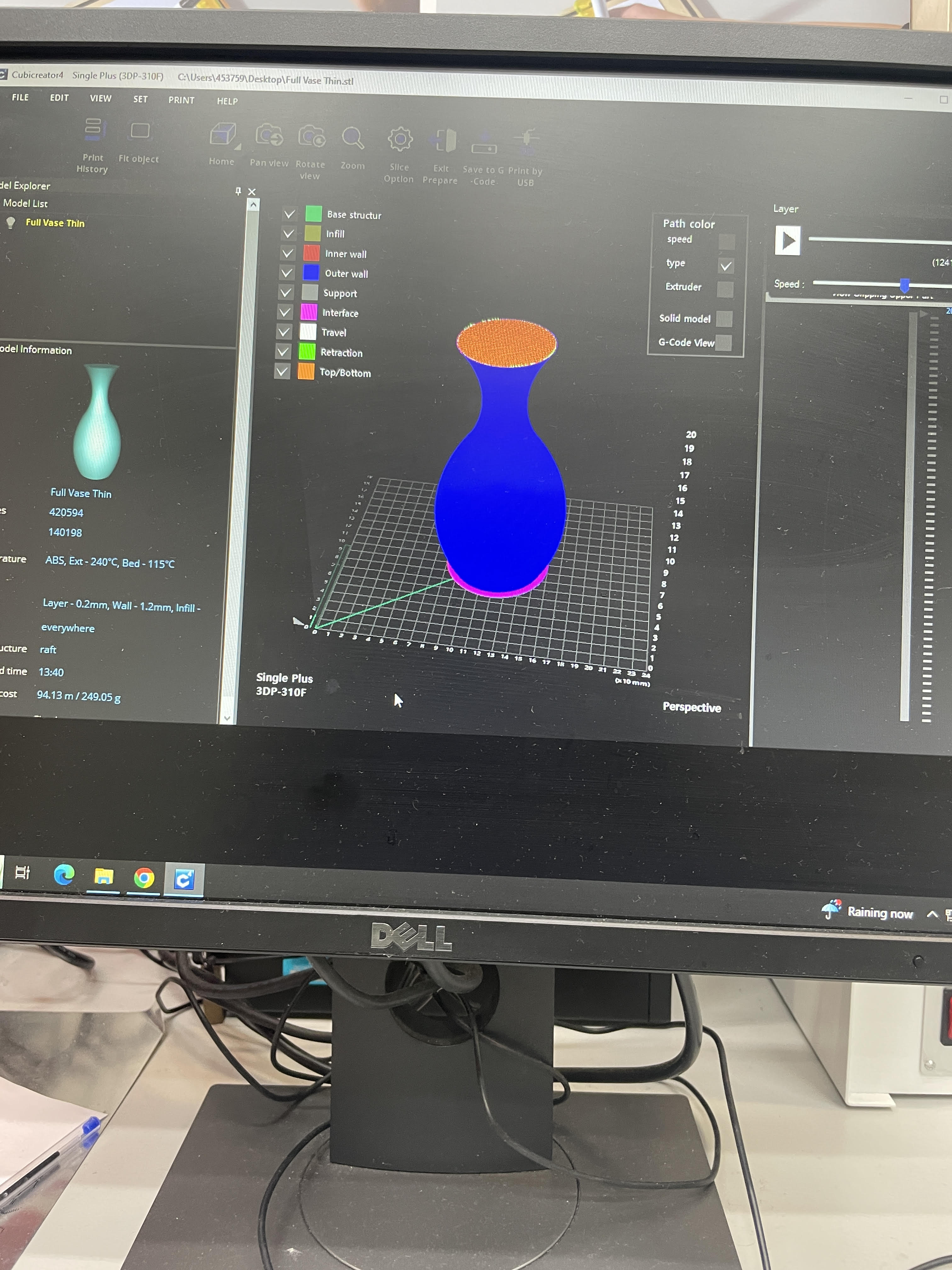
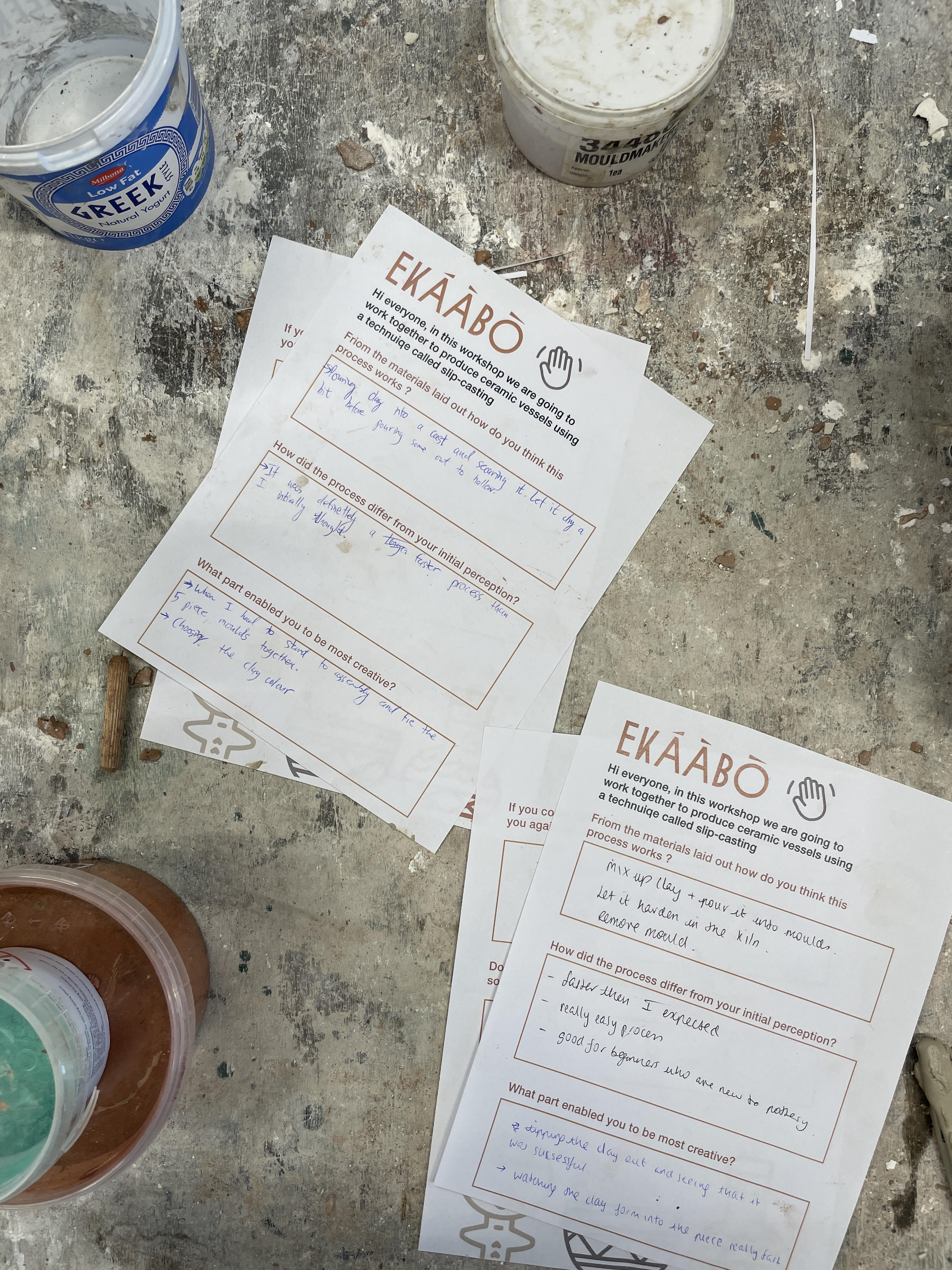
Final Product & Conculsion
The product, Ẹkáàbọ̀, takes its name from the Yoruba word for "Welcome." It comprises of modular ceramic molds that will be provided to rural communities in West Africa to make the production of traditional ceramics more efficient. The molds can be customized and finished to the artisan's preference.
Ẹkáàbọ̀, allows artisan to reflect their unique style and cultural heritage in the product. To provide transparency and traceability in the supply chain, each vessel produced using the Ẹkáàbọ̀ molds is marked with a QR code tag. When scanned, the QR code provides information about the community the vessel came from, the artisan who made the vessel.
Reflecting on the completion of this project, I recognize the significance of the development of clear and comprehensive instructions. If I were to undertake the project again, I would place a greater emphasis on refining and articulating the instructions provided.
The product, Ẹkáàbọ̀, takes its name from the Yoruba word for "Welcome." It comprises of modular ceramic molds that will be provided to rural communities in West Africa to make the production of traditional ceramics more efficient. The molds can be customized and finished to the artisan's preference.
Ẹkáàbọ̀, allows artisan to reflect their unique style and cultural heritage in the product. To provide transparency and traceability in the supply chain, each vessel produced using the Ẹkáàbọ̀ molds is marked with a QR code tag. When scanned, the QR code provides information about the community the vessel came from, the artisan who made the vessel.
Reflecting on the completion of this project, I recognize the significance of the development of clear and comprehensive instructions. If I were to undertake the project again, I would place a greater emphasis on refining and articulating the instructions provided.
